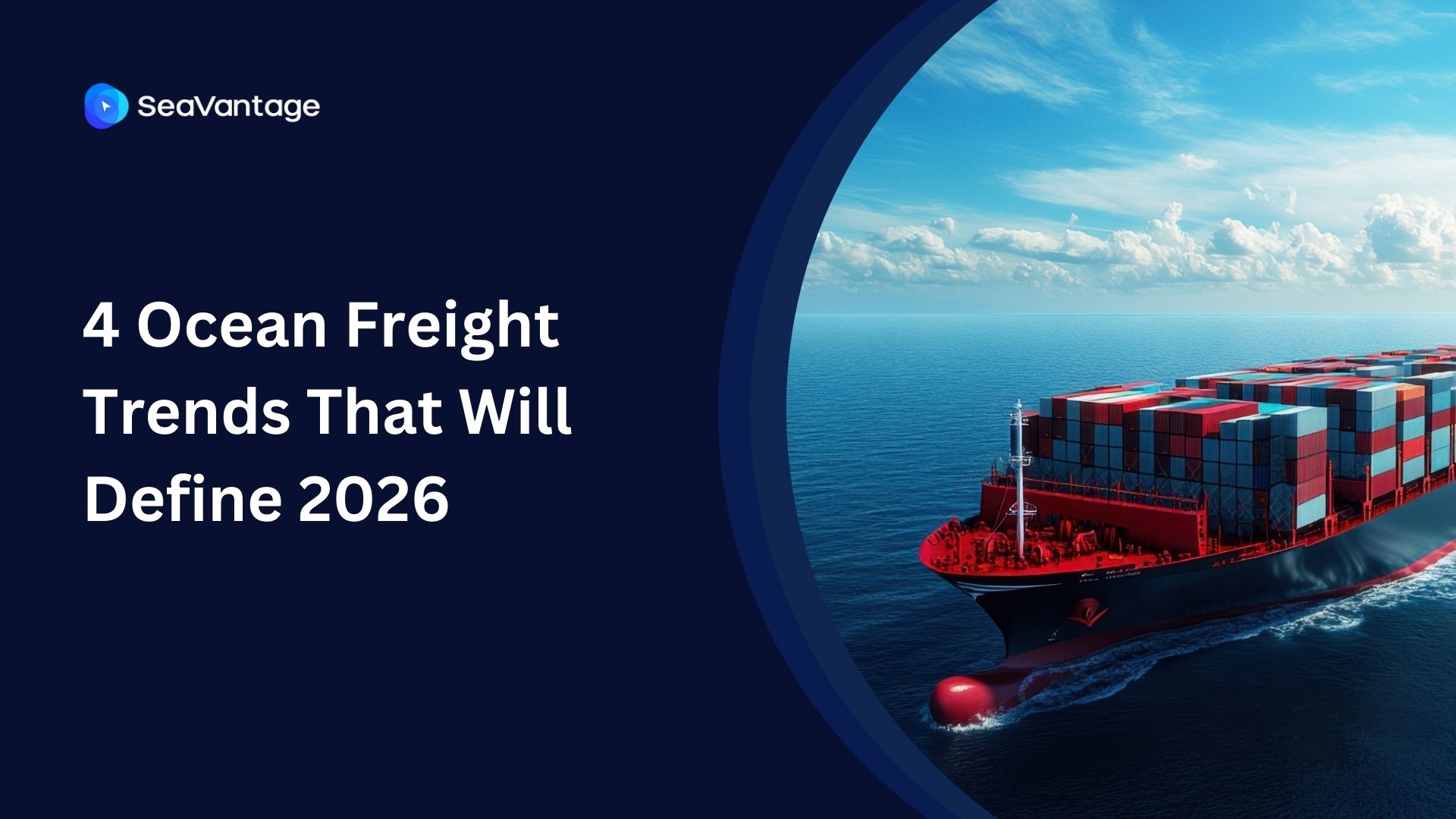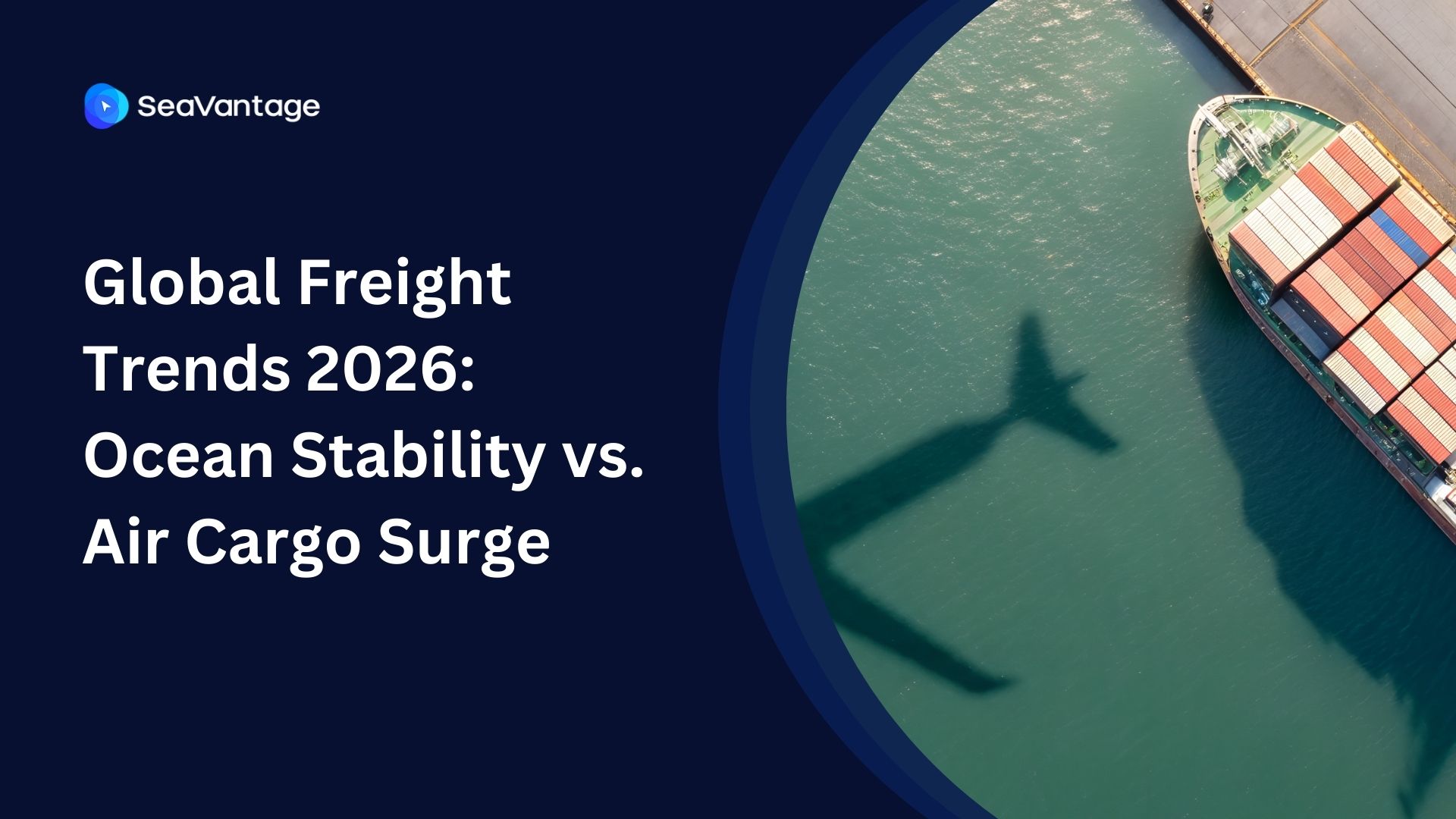What You Need to Know About the Strait of Hormuz (2025)

The Strait of Hormuz isn’t just a narrow channel between two coastlines—it’s the world’s most important oil artery. And in 2025, it's back in the spotlight. Tensions between Iran and Israel are escalating. U.S. naval operations are expanding. Energy markets are on alert. But what does all this really mean for global trade, energy security, and your bottom line?
In this article, we'll explore what the Strait of Hormuz is, why it matters more now than ever, and what to watch as the year progresses.
What (and Where) Is the Strait of Hormuz?
Nestled between Oman and Iran, the Strait is the only maritime gateway between the Persian Gulf and the Arabian Sea. At its most constricted point, it narrows to just 21 nautical miles (about 33 km)—barely wide enough for two-way tanker traffic .
Despite its size, it handles immense volumes. In 2024 and through Q1 2025, around 20 million barrels of oil per day—roughly 20% of the world’s daily consumption—moved through these waters. Add in nearly 25% of global LNG exports, and you recognize Hormuz as a literal chokepoint for energy flows.
Maritime analysts rely heavily on AIS vessel-tracking to gauge traffic trends and identify early signs of danger. That’s where live ship tracker apps come into play—monitoring traffic is now as crucial as tracking prices.
Feel free to check out this post on live tracking tools.
A Strategic Chokepoint with a History
Hormuz has long been an arena of strategic importance. During the 1980s Iran–Iraq Tanker War, Iran targeted shipping, prompting the U.S. Navy to escort tankers through the strait. Fast forward to the 2010s and 2020s, and tensions flared through seizures of vessels—such as the Grace 1, Stena Impero, and MSC Aries.
Again in early June 2025, two tankers collided under unclear circumstances—not combat-related, but illustrative of how fraught conditions here have become .
Yet despite numerous stand-offs, it has never been fully closed. That’s the difference this year: multiple players are signaling it could happen—but to date, only threats have passed into action.
Who Decides—and Could Iran Actually Close It?
Iran undeniably exerts the most influence over the northern side of the channel, but international maritime law allows freedom of navigation in straits used for international traffic. Closing the strait would thus be not only a political but a legal statement.
Domestically, Iran’s parliament voted on 22 June 2025 to endorse closure in retaliation for U.S. strikes targeting its nuclear facilities. However, final authority rests with the country’s Supreme National Security Council—a more strategic and perhaps restrained body.
Realistically, any closure now could backfire. Iran depends on oil exports—disrupting the strait would hurt its economy as much as global markets.
What Happens If the Strait Is Closed or Threatened?
Even talk of closure can have outsized global consequences.
On June 12–13, Brent crude surged from $69 to $74/barrel, reacting to the first wave of U.S.–Israel strikes. Market analysts quickly flagged the risk of Brent climbing toward $100–150/barrel, with extreme scenarios reaching $200.
By contrast, Citi suggests a sharp but short-lived spike—about $90/barrel—should the strait shut, with prices normalizing as global supply adjusts.
However, Goldman Sachs paints a more concerning scenario: if flows fall by half for a month and remain 10% below normal for a year, Brent could spike to $110/barrel, averaging $95/barrel by late 2025.
JP Morgan’s worst-case estimate ranges to $120–130/barrel if the disruption aligns with broader regional conflict.
Ripple Effects: Beyond Just Oil Prices
While prices capture headlines, the knock-on effects are even more complex:
- Shipping delays & port congestion: Rerouting tankers adds distance—and time. Port congestion and bunkering logistics become critical bottlenecks .
- Insurance & risk management: Since late June, firms like Bimco have reported slower transit times and higher insurance premiums .
- Strategic responses: Increased naval escorts, such as European EMASoH patrols and U.S. Fifth Fleet missions, are now standard in response to the heightened threat.
If shipping gets squeezed, so do supply chains. Energy-intensive industries could see material costs rise, while volatile energy prices feed through into inflation.
Countermeasures & Alternative Routes
What could reduce the blow of a Hormuz disruption?
1. Pipelines:
- Saudi Arabia’s East–West pipeline (Red Sea) holds about 7 mbd capacity, up from 5 mbd after a 2019 expansion.
- The UAE’s Fujairah line adds 1.8 mbd, shielding some UAE exports from strait risks .
- Iran’s Jask route remains limited, under 0.3 mbd.
2. Combined, these pipelines can only replace about 2.6 mbd — a small portion of the 20 mbd passing Hormuz .
3. U.S. & allied naval presence:
- EMASoH, Fifth Fleet escorts, and international convoys aim to deter hostile intent .
4. Market buffers:
- U.S. shale output and strategic reserves helped stabilize prices after June’s initial shock.
5. Regional agreements:
- Diplomatic ties like the Abraham Accords and increasing energy trade with powers like China complicate Iran’s calculus—economic downturn and political isolation could outweigh strategic benefits.
Why a Full Closure Is Unlikely in 2025
Despite the threats, several key factors argue against a full shutdown:
- Iran’s economic vulnerability: Oil is its primary export; blocking Hormuz inflicts self-harm.
- Global pushback: U.S., Europe, and China have financial incentives to keep the strait open — and modern diplomacy and intelligence allow for swift responses.
- Enhanced surveillance and military deterrence: Maritime patrols and allied coalitions mean any aggressive move would face immediate reaction .
- Judicious internal politics: With the parliament’s vote symbolic, Iran’s security council is expected to weigh costs carefully .
History supports this restraint—although Iran has repeatedly threatened closure, it’s never followed through.
What to Watch Through 2025
Keep a close eye on:
- Shipping traffic trends via AIS or live vessel trackers—significant rerouting or delays will be early warning signs. Resources like this can help . Then cross-check with port call data to see where vessels pile up.
- Parliament vs. security council: Monitor statements from Tehran; they often predict upcoming policy or escalation.
- Oil futures pricing: A significant premium in Brent or WTI often signals markets gearing for more disruption.
- Naval deployment alerts: New deployments from EMASoH, U.S., or allied navies increase military presence—and deter closure.
- Diplomatic shifts: Any agreement that offers Iran incentives—like eased sanctions or energy deals—reduces the incentive to escalate.
Conclusion: Balancing Risk, Resilience & Realism
Yes—2025 marks a new peak in tension. And yes—the Strait of Hormuz carries real risk to global energy flows. But so does risk have limits.
Markets remain cautious yet confident. Pipelines, shale output, international diplomacy, and strategic naval presence cushion against worst-case scenarios.
For energy decision-makers, logistics managers, and policy watchers, the message is clear: stay informed, leverage real-time data, and prepare for turbulence—but don’t assume blackout. The world might jolt, but it won't stop turning.
2025년 9월, 주요 글로벌 항만에서 어떤 운송사가 가장 긴 선박 체류 시간을 기록했는지 확인해보세요. 트렌드를 비교하고, 지연을 파악하며, 전체 항만 데이터를 통해 운송 전략을 최적화할 수 있습니다.
2025년 8월, 주요 글로벌 항만에서 어떤 운송사가 가장 긴 선박 체류 시간을 기록했는지 확인해보세요. 트렌드를 비교하고, 지연을 파악하며, 전체 항만 데이터를 통해 운송 전략을 최적화할 수 있습니다.
2025년 7월, 주요 글로벌 항만에서 어떤 운송사가 가장 긴 선박 체류 시간을 기록했는지 확인해보세요. 트렌드를 비교하고, 지연을 파악하며, 전체 항만 데이터를 통해 운송 전략을 최적화할 수 있습니다.
iscover the 4 critical ocean freight trends for 2026, from the Red Sea reopening and fleet overcapacity to shifting global trade maps. Prepare your supply chain now.
Discover key 2026 freight market trends: Port of Houston expansion, air cargo "super peak," and ocean freight stability. Plan your supply chain with SeaVantage.
Explore November 2025 global port dwell time data. See which ports and carriers led in efficiency across Antwerp, Busan, Long Beach, Rotterdam, and Singapore.



.svg)





.jpg)

.png)